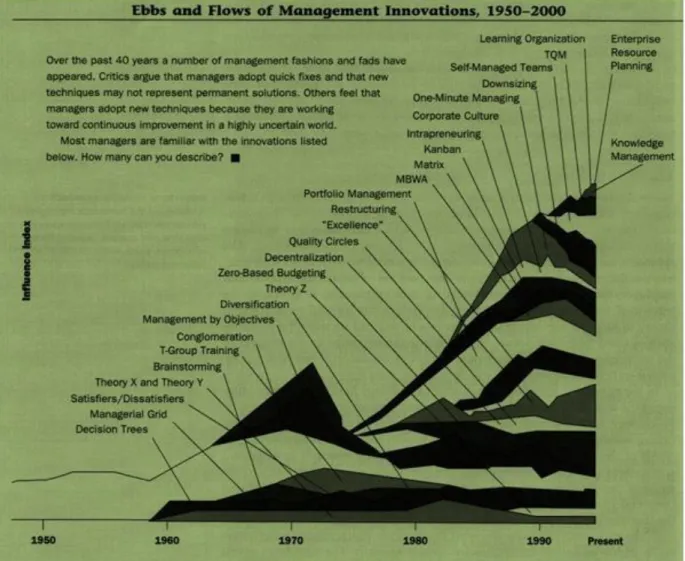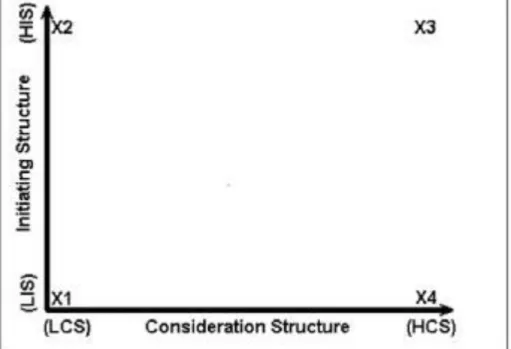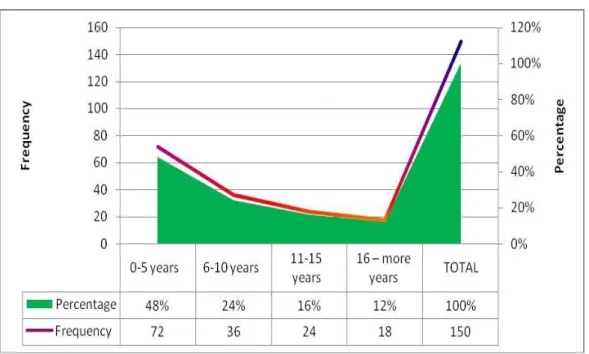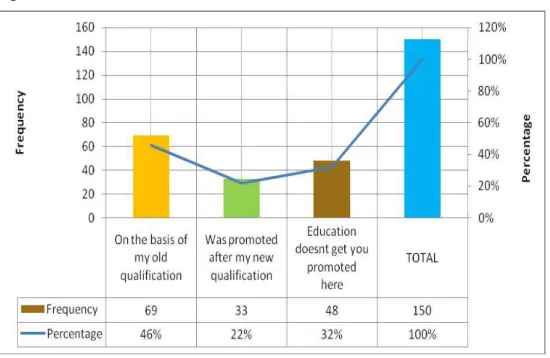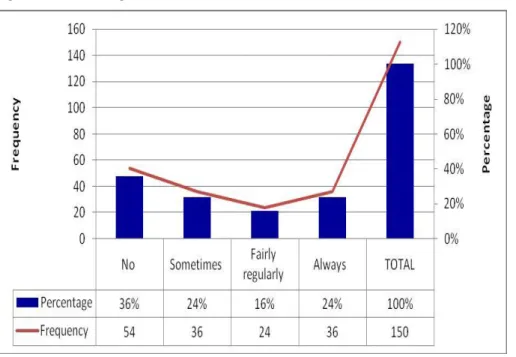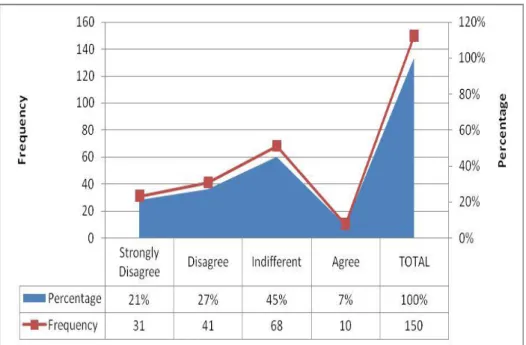BACKGROUND OF STUDY
Introduction
Background
Main Problem
Objective of the Research
Hypotheses
Research Methods
Conclusion
ORGANISATIONAL DEVELOPMENT
Introduction
The current chapter provides an overview of the hospitality industry with an emphasis on the accommodation sector and the different organizational structures within the industry. The chapter also discusses the Small Medium Micro Enterprises (SMMEs) and the different classifications in the business and hospitality context.
Overview of the hospitality Industry
Department of Labor South Africa. Tracking Progress on the Implementation and Impact of the Employment Equity Act since its inception. Sociology of Work Unit. 2010), "The Critical Need to Reinvent Management", Business Strategy Review, Spring. Breaking the "bamboo curtain" and the "glass ceiling": the experience of women entrepreneurs in high-tech industries in an emerging market.

Generic organizational structure from a development perspective
Structure in terms of the size
Structure in terms of ownership
In smaller businesses, the owner tends to be responsible for most operations or the management of those operations. Some of the roles that a small to medium business owner plays are investor, manager, operator and decision maker, the owner will usually carry out all the duties and responsibilities (Zimmerer& Scarborough, 2002:4).
Structural Politics
Society is defined as a living organism in which every part of the organism contributes to its survival.
Political Economy
Ramparsad points out that “the essence of anonymity is that the information provided by participants must not reveal their identity in any way”. The identified factors include the lack of support structures for women from the organisations, industry and associations, shown in the above chapter in Figures 7.6.2 and 7.6.3 The balance between motherhood, family and work and finally and interestingly women themselves not wanting to develop themselves in any kind of career advancement.

Gender Distribution in the structures
Socio-economic structure classified
Summary
Kouzes and Posner (1995:1) define leadership as “the art of mobilizing others to strive for shared aspirations”. In contrast, Burke and Collins concur with the previous findings, as their study found that "the tendency for women to emphasize the highly effective transformational leadership style more than their male peers applied to all four sub-components of the transformational leadership style" .
THEORIES OF LEADERSHIP AND LEADERSHIP STYLES
Introduction
This chapter will give the different management theories and the different views on the concept of management and leadership, the principles of management and development of management will also be discussed. The reason why an overview of management theories is included in this literature review is because it will allow the researcher to gain a deeper understanding of the concept of management styles and what type of ideology has previously been used to explain this phenomenon.
Concept of management and leadership
Leadership – Managers are expected to lead their employees, which is to motivate them to achieve the organization's goals quickly and efficiently. Bartol, Martin and Kromkowski define leadership as a process of influencing others to achieve the long-term goals of the organization.
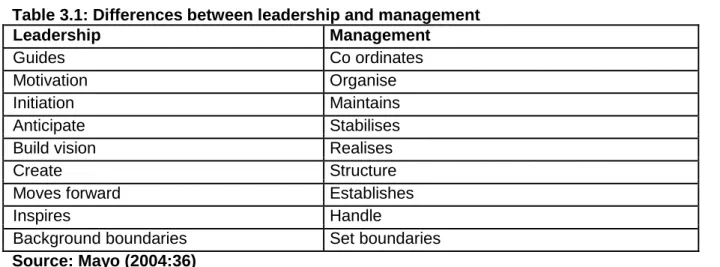
Leadership Styles
This type of leadership has consistently proven to be the least satisfying and effective leadership style. Laissez-faire will not be a good management style in the hospitality industry, as hospitality managers may need to be self-aware to be perceived as effective managers.
Leadership Theories
Empathy – this is the degree to which a leader can thoughtfully consider employees. feelings in the process of making decisions. Edgerson and Kritsonis (2006:3) believe that the concept of trust is important in the leadership of leaders.
Summary
By implication, if female managers use this androgenic trait, they may have a better chance of moving up the corporate hierarchy and attaining leadership positions. The issue that needs to be addressed is: if women's leadership styles are different from men's, how can this be explained? Hersey and Blanchard asserted that 'the more managers adapt their style of leadership behavior to meet the specific situation and the needs of their followers, the more effective they will tend to be in achieving personal and organizational goals.
CONCEPT OF WOMEN AND MANAGEMENT
Introduction
This chapter discusses the different perceived theories of female management and leadership and the different understandings of the concept of female management and women in leadership. The concept of women's career advancement and the different leadership styles of women will be discussed, including proponents and opponents.
Reviewing Women in Management
Despite women being emotional beings, South Africa has one of the highest numbers of women in parliament and in senior positions globally. If this is true, then it can be hypothesized that part of the lack of women in senior positions in organizations may be related to gender.
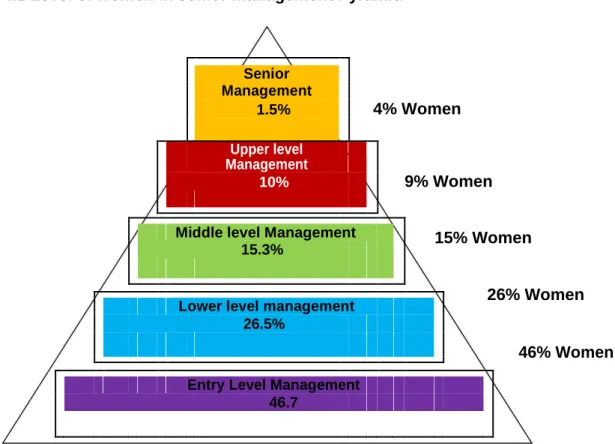
Concept Women’s career development
Share of women in management - it is important to increase the number of women who qualify for senior management positions. Career Success - Organizations/institutions are encouraged to support female executives by removing barriers to facilitate improved success rates for women in senior management positions.
Women Leadership Styles
Doherty acknowledges that there is a difference between men and women in their leadership styles and techniques and the derivation of different competencies. The leadership styles of women and men are different according to Eagly and Linda, perhaps because women are more cooperative and cooperative but less hierarchical than men. One of the differences is that women are more participatory and democratic than male leaders.

South African Labour Law
The Employment Equity Act was introduced to correct past injustices, unfair discrimination and other unfair laws and practices that have occurred in the labor market. Making reasonable accommodations for people from certain groups to ensure they have equal opportunities and are fairly represented in the workforce; Ensuring fair representation of appropriately qualified people from specific groups in all occupational categories and levels of the workforce; and.
Summary
A performance management system typically involves "setting performance goals, measuring performance against those goals, identifying development support, and a review process for developing performance and subsequent goals" (Brewster, Carey, Dowling, Grobler, Holland & Wärnich. According to Kumar, sampling is "a selection process a few (simple) from a larger group (a sample population) that becomes the basis for estimating or predicting the prevalence of an unknown fact, situation, or outcome in relation to a larger group." Bass and Stogdill's Handbook of Leadership: Theory, Research, and Managerial Applications, 3. edition, The Free Press, New York, NY, 1994), ``Transformational leadership and organizational culture'', International Journal of Public Administration, 17 3 /4, p.
CONCEPTUAL FRAMEWORK
Introduction
This chapter will focus on the conceptual framework of the thesis; the first part of this chapter will focus on the historical overview of management and leadership highlighting the advantages and disadvantages. The second part of this chapter focuses on the history of management, leadership and the hospitality industry, and finally the chapter focused on the historical perspective of the conceptual framework. The structure of the organization of the content of the research and for the framework of the conclusion of the research.
Historical perspective of Management and Leadership
Therefore, these characteristics provide an idea and understanding of the dynamics behind leadership and management. The creation of the most energy-efficient way to deal with the causes of events and situations that do not fulfill a purpose linked to a particular situation. Management is the process of planning, organizing, directing and controlling the organization's resources to achieve stated organizational goals as effectively as possible.

Leadership Theories
The correct leadership style will depend on the maturity level of the follower in a given work situation. Transformational Leadership Theory focuses on the importance of the relationship between the leader and the follower. Bass (1990:40) is of the opinion that considerate leaders are leaders who place great importance on the relationship between them and their followers.
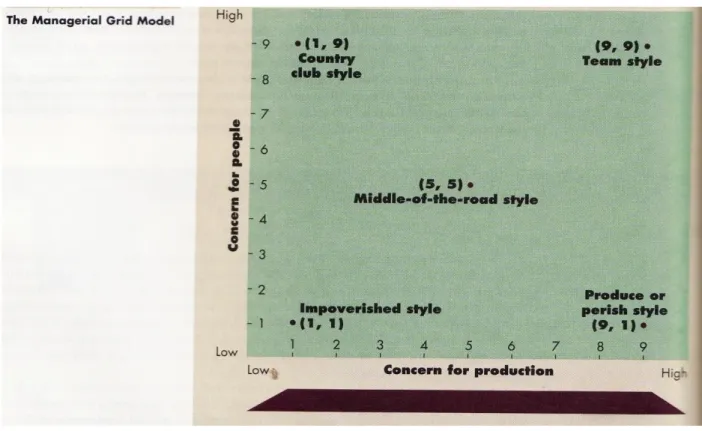
Summary
The purpose of this question was to determine the position of the respondent in the organization in which he is employed. The purpose of this question was to determine whether the CEO is employed by the establishment listed in Figure 7.4.7 below. Respondents' involvement in the industry was very important to their response to this particular.
METHODOLOGY
Introduction
The purpose of this chapter is to provide the research methodology used in exploring the factors influencing the career development of women in the hospitality industry, the way research is conducted can be understood in terms of the research philosophy endorsed, the research strategy used and the research tools used in pursuing the research objectives and seeking the solution of the research problem. Explore the developed research tools and the population, samples and data analysis that will be used in this study.
Literature Review
- Rationale for the methodology
- Research Design
- Sample Methods
- Research Instrument
- Validity and Reliability
- Process for data analysis
- Ethical Consideration
The second section of the questionnaire examined barriers and/or perceived factors affecting women's progress in the industry. Answer: 150 women answered this, it was expected that most of the women were in low positions in hotels. The purpose of this question was to determine whether education is the main determining factor for promotion.
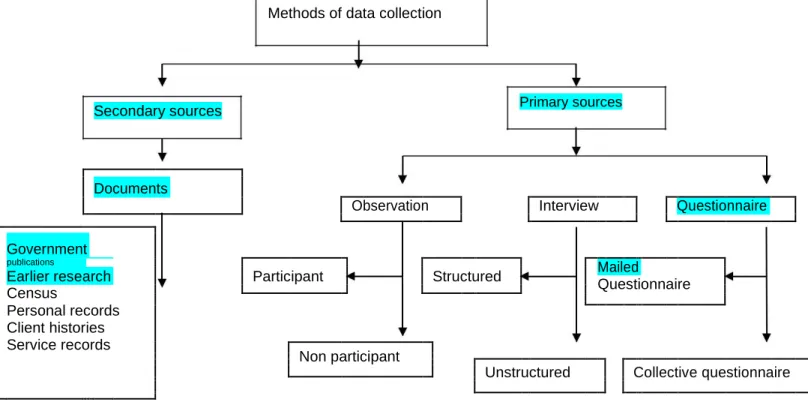
Summary
RESULTS AND ANALYSIS
Introduction
- SECTION A BIOGRAPHY
- SECTION B PERCEIVED FACTORS AND POSSIBLE BARRIERS
The purpose of this question was to find out what types of occupations women are involved in in the hospitality industry. The purpose of this question was to determine whether the general manager decides on the process of hiring department heads in different departments within the hotel organization. The purpose of this question was to determine whether senior management positions belong to friends and family members in the organization.
The purpose of this question was to find out whether applying for management positions is too much work/effort for women in the organization. The main objective of this study was to determine the factors that influence the career development of women in the hospitality industry.

Summary
RECOMMENDATIONS
Introduction
To identify the barriers to the development of women into management positions in the hospitality industry in Cape Town. The study was conducted through the collection of data from women in the hospitality industry at hotels in Cape Town. The questionnaires respond quite positively to the various factors that contribute to the development of women's careers in the hotel industry.
To identify through research that there are barriers to the advancement of women into management positions in the hospitality industry. This academic exercise attempts to identify the factors influencing women's career advancement in industry.
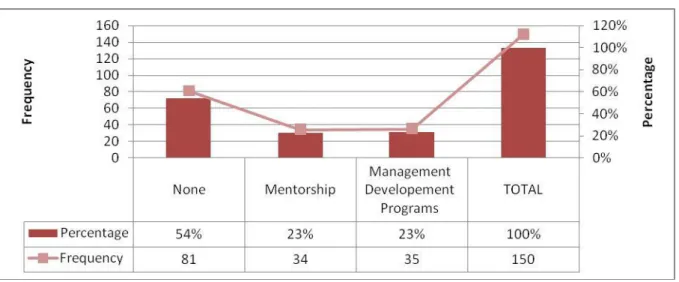
Organizational Support Structures
Women
Equity and equality in human resources
Educational programs
Areas for further research
The impact of gender on career paths and management capabilities in the hotel industry in Canada, Journal of Human Resources in Hospitality & Tourism. The relationship between career and employment for women in the hospitality industry as a microsma of women's employment. 2005. A model for the implementation of the t.a.s.k. 2002). Lighting the glass ceiling: the role of organizational culture.
Summary…
